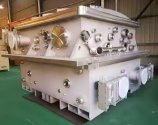Deepen and expand the application scenarios of direct writing lithography equipment

Jiweiwang News On February 24, Xinqi Microdevice released a performance report stating that in 2022, the company will achieve operating income of 653 million yuan, a year-on-year increase of 32.64%; realize net profit attributable to the owners of the parent company of 137 million yuan, a year-on-year increase 28.72%; the net profit attributable to the owners of the parent company after deducting non-recurring gains and losses was 117 million yuan, a year-on-year increase of 34.63%.
At the end of the reporting period, the total assets of Xinqi Microdevice were 1.547 billion yuan, an increase of 22.43% from the beginning of the period; the owner's equity attributable to the parent company was 1.049 billion yuan, an increase of 12.70% from the beginning of the period.
Xinqi Microdevice said that during the reporting period, the company continued to open up market space through product innovation iterations, product performance continued to improve, and application scene layout continued to enrich, vertically promote the speed of PCB product import substitution and traditional substitution, and horizontally expand pan-semiconductor business. The double drive of product innovation iteration and business extension promotes the continuous growth of the company's revenue and profits. At the same time, the company has deeply cultivated the market and established a high brand awareness. With the continuous introduction of new products into the market, the process of domestic substitution has been further accelerated.
The substantial increase in net profit is mainly due to the company's increased market development efforts, continuous increase in the market share of PCB products, and the deepening and expansion of direct writing lithography equipment in new applications such as new displays, PCB solder mask, lead frames, and new energy photovoltaics. application, broaden the coverage of the downstream market, and promote the continuous growth of the main business scale. At the same time, the company aims at the fast-growing IC substrate and substrate-like markets, increases market introduction, promotes the high-end upgrade of the company's direct-writing lithography equipment product system, and improves the profit level of direct-writing lithography products.

